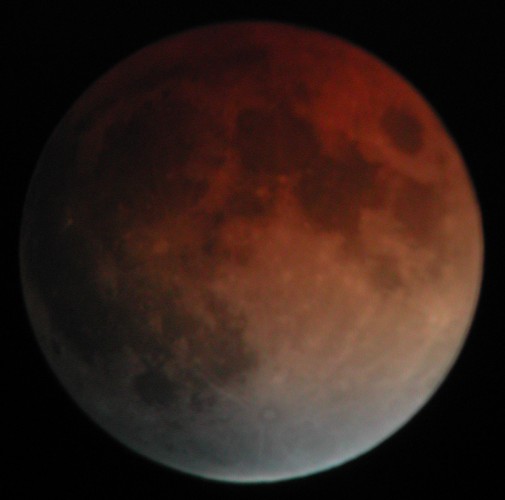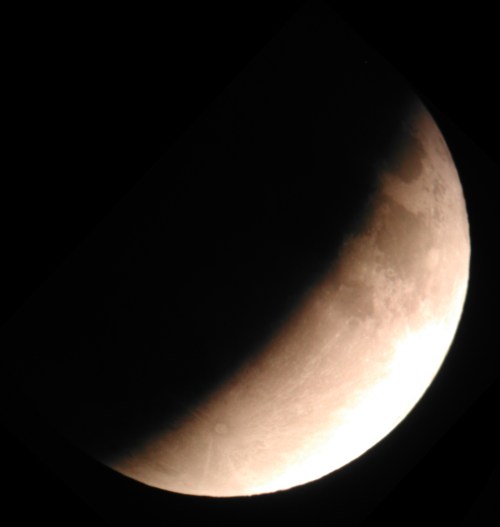November 8th, 2003 Eclipse Photo Page
November 8th, 2003 Eclipse Photos
This was taken on November 8th, 2003 8:30 pm EST from the Observatory at Michigan State University through a 10 inch schmidt-cassegrain telescope. The camera was just held up to the eye piece with a one second exposure. Sunlight that refracts or bends through the Earth's atmosphere gives an eclipsed moon a reddish look. Usually the full moon passes above or below shadow because the moon's orbit is tilted five degrees from the Earth's orbit around the Sun.

This shot was at 7:25 pm EST on November 8th, 2003. The moon was not yet totally eclipsed. The curved shape of the umbra seen during lunar eclipses by the ancient Greeks led the to the idea that the Earth was round. This is a 1/4 sec exposure through an 18 inch newtonian telescope.
At first glance, this might look like a crescent moon. But upon closer inspection, you will notice the lack of detail near the "terminator". Compare this photo to the 5 day old moon photo. A true crescent moon shows a great amount of detail. Craters and mountains cast long shadows making them more visible. During an eclipse, sunlight is shining straight down on the craters and mountains leaving no shadows.

Photos by:
John French
Planetarium Production Coordinator
Abrams Planetarium
Michigan State University
East Lansing, Michigan, USA
Index Page

